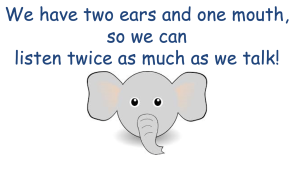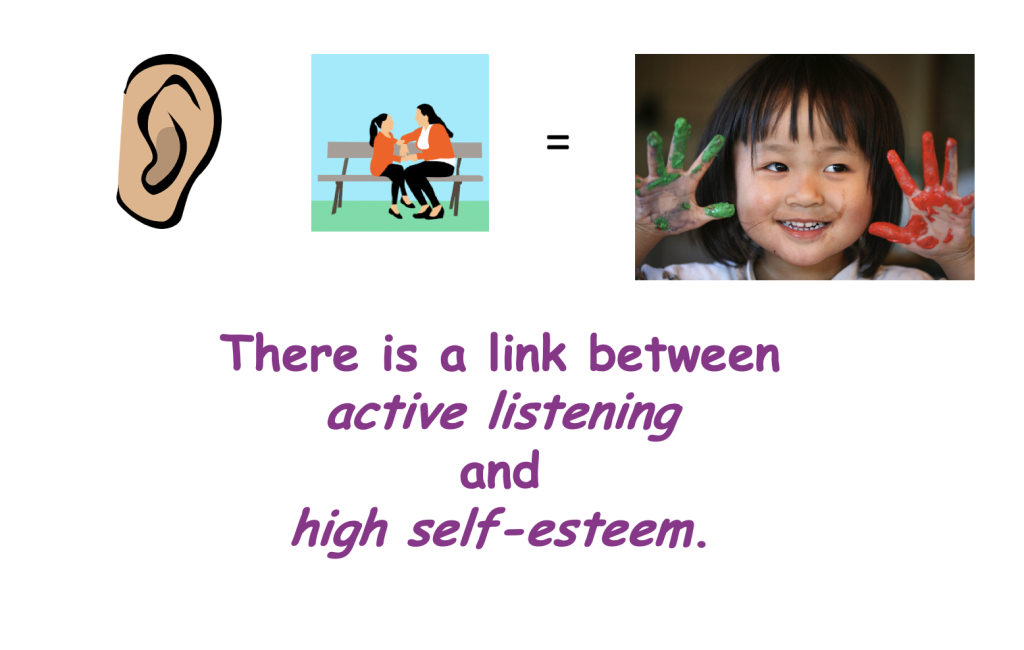
We aren’t taught to listen, we ‘just do it’.
Some people are better than others.
Sometimes as parents, things get in the way and we can be distracted when our children are trying to talk to us.
Listening does not mean fixing, it means supporting our children to work things out.
Encourage them and build their self esteem.

Two levels of listening
There are 2 levels of listening:
- What the words are telling you
and
2.What your child is feeling. It is important to hear on both levels.
How to Actively listen
Use open body language
What does this mean? (I’ll give you a clue – the OPPOSITE of someone on their phone!)
Think about someone you like to talk to – someone who is there for you.
Are they looking at you, is their body facing you, are they nodding (and really listening) to what to what you are saying?
Do they ask open questions like ‘How do you feel?’, ‘What do think about that?’ etc rather than talking about themselves.
If you can do this for your children you will keep the communication open between the two of you – and help them to problem solve.
Other helpful tips
- Make a conscious decision to listen
- Switch off your own agenda
- Ask open questions (who, what, where, when, how)
- Think of your body language – open posture, nodding, facing child, eye contact when you can.
- Resist giving advice. Remember – you’re not fixing.
- Listen for their feelings (e.g it sounds like you’re really angry)
- If it isn’t an appropriate time for you to listen, make an arrangement with your child to find a suitable time. Make sure you stick to it.
- Think about how it feels when you are not listened to compared to how you feel when you are being listened to.
- Mirror good listening to show your children how to become good listeners.
Suzanne shares more in the You Tube video below:
